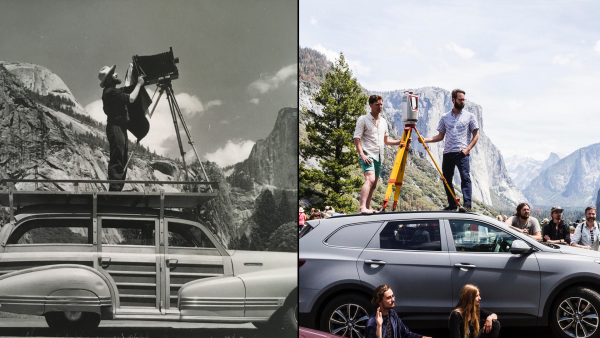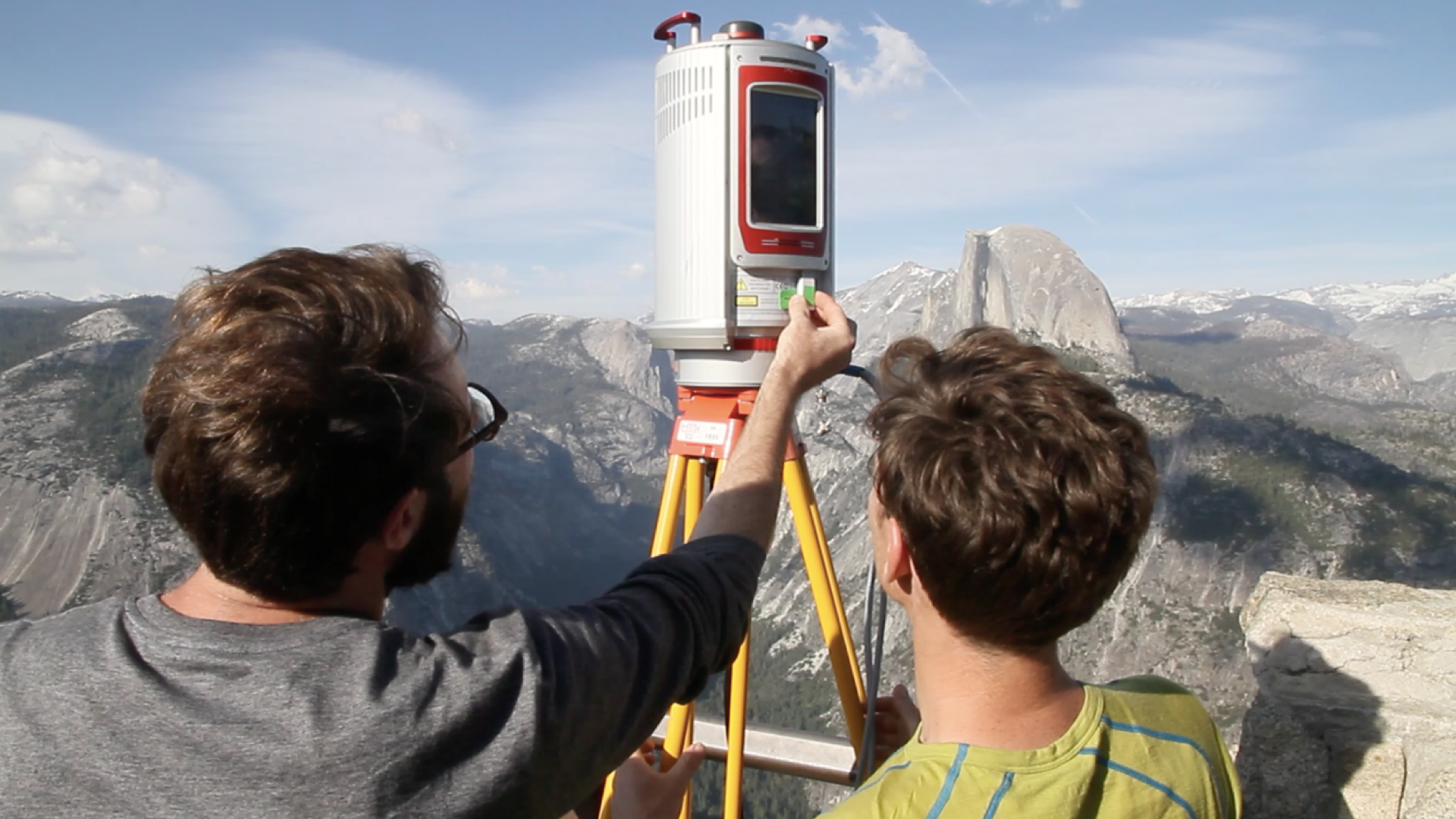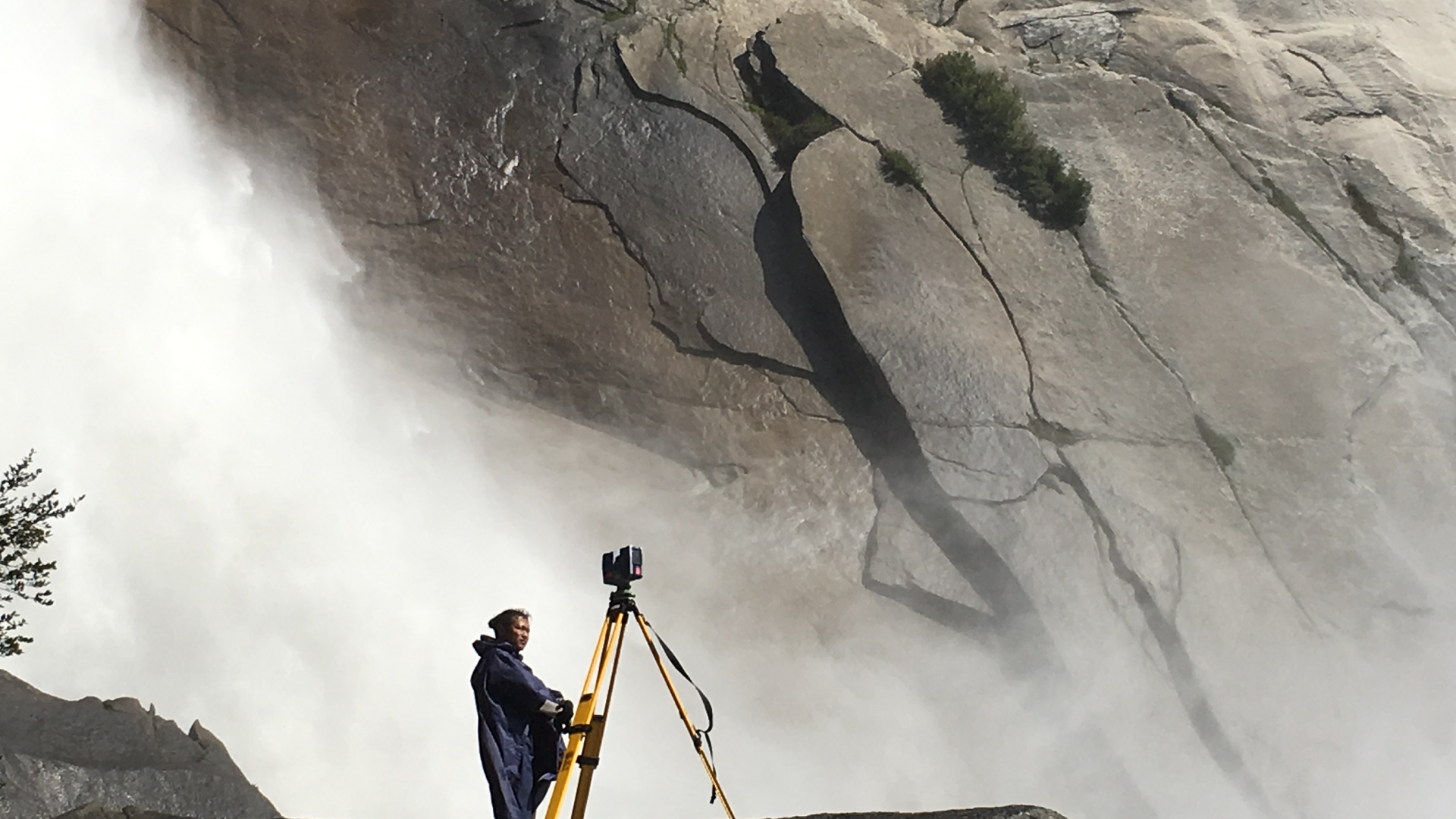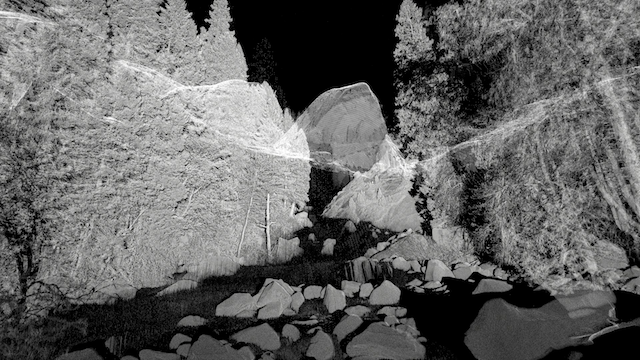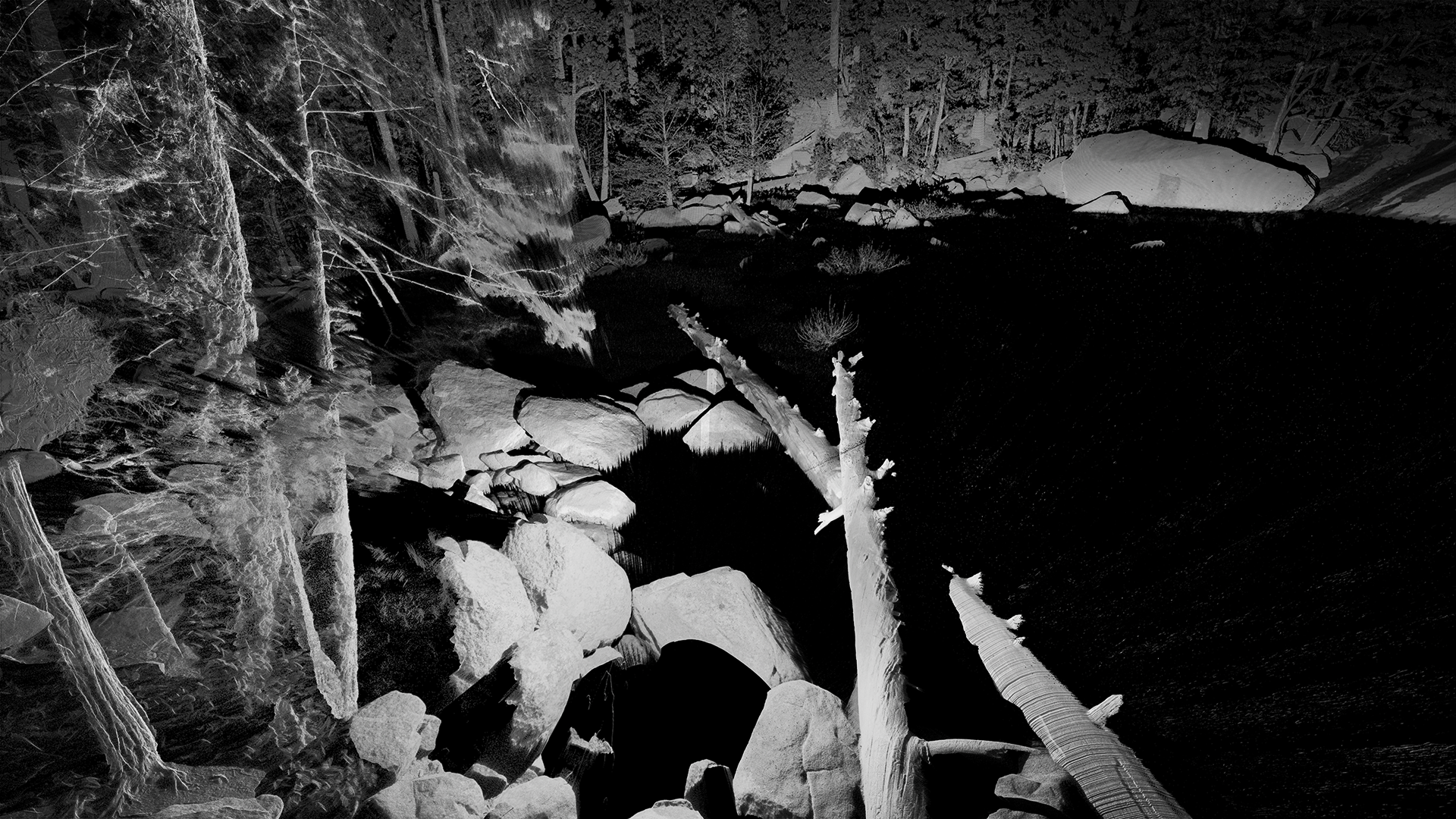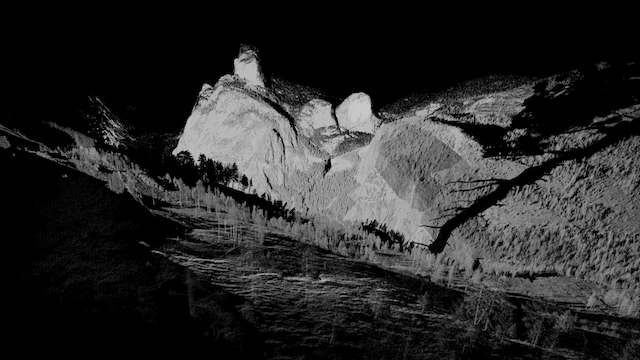Pioneer of photography Eadweard Muybridge took his so-called “flying studio” to Yosemite in the spring of 1867. Camping overnight along the route over the course of several months, Muybridge and his team would set up a tent housing all of his equipment and chemicals for processing the collodion wet plates used to develop his images. The results, a series called Yosemite: its Wonders and its Beauties, established Muybridge as a master of emerging photographic technology. A half-century later, following in Muybridge’s footsteps, Ansel Adams received acclaim for the technical and aesthetic mastery expressed in his dramatic images of Yosemite, including pictures like that of Vernal Fall.
Just last month, ScanLAB Projects, funded by LACMA’s Art + Technology program, retraced the steps of the pioneers of American landscape photography. Under the guidance of Will Trossell and Matthew Shaw, the ScanLAB crew visited Yosemite to undertake a series of experiments in terrestrial 3D scanning, a form of active imaging that captures dense, accurate 3D data about object surfaces. The Lab’s presenting sponsor, Hyundai, provided a vehicle for the journey which the crew retrofitted into a traveling studio of sorts. Although ScanLAB has been working with laser scanning for several years now, Yosemite presented new challenges, with its rugged terrain and dramatic waterfalls.
During the journey, the team captured more than 150 groundbreaking scans. LACMA Art + Technology Lab program director Joel Ferree arranged for Yosemite rangers to provide extraordinary access and unique vantage points to the team. For example, camped out overnight beside one of the waterfalls, and unsure of what the finished result might look like, the crew had the opportunity to scan moving water for the first time, with stunning results.
Here are some of the first images from these scans, courtesy of the artists. The project enters a second phase this fall, as ScanLAB works to transform the Hyundai vehicle into a traveling digital diorama, through which passersby will be able to peer into a ghostly 3D landscape image of Yosemite. This fall, we will also present a short documentary film by the artists about the journey to Yosemite.
To hear more about this project and other Lab events, join our mailing list by sending a message to lab@lacma.org.
The Art + Technology Lab is presented by Hyundai.
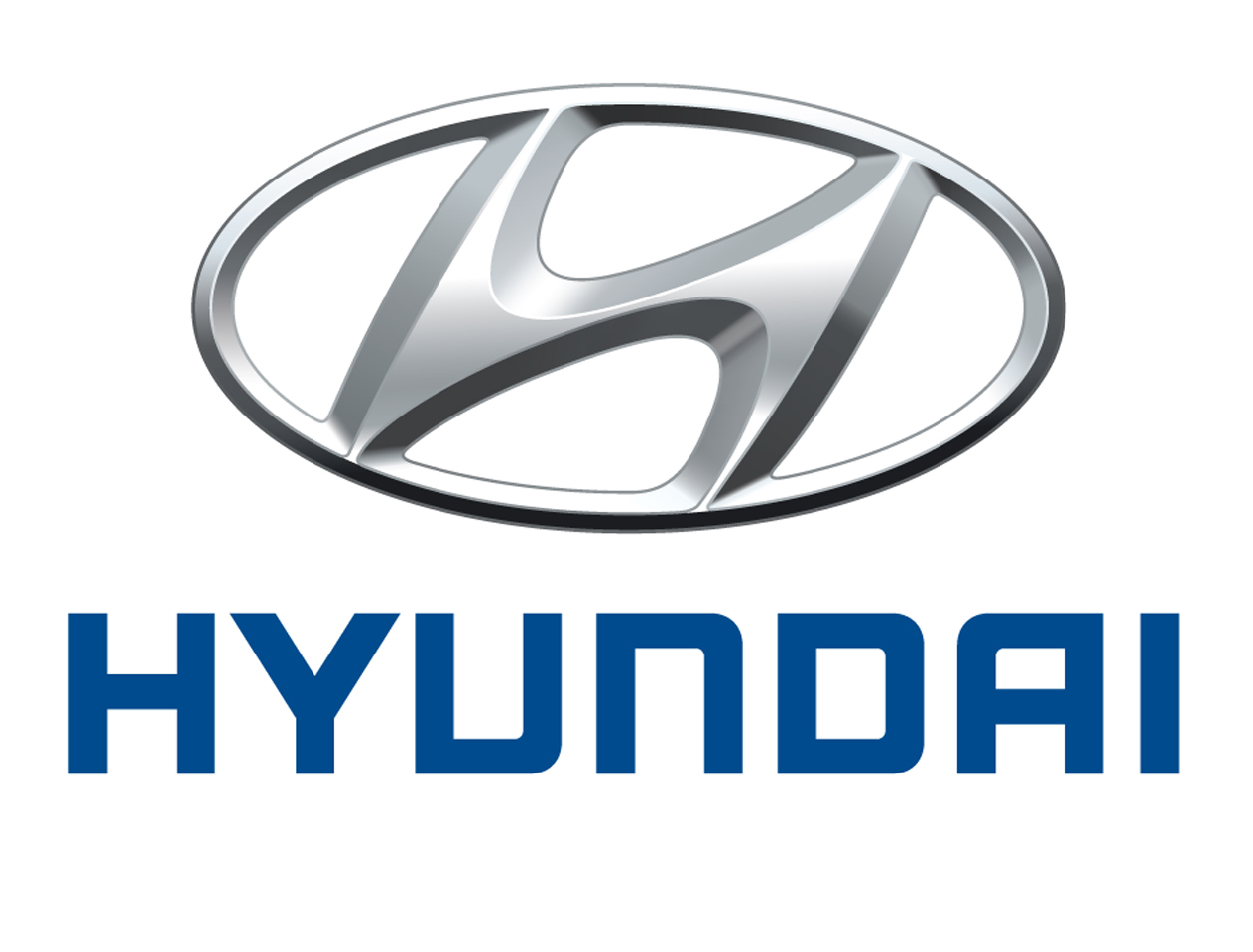
The program is made possible by Accenture, DAQRI, and NVIDIA. Additional support is provided by Google and SpaceX.
The Lab is part of The Hyundai Project: Art + Technology at LACMA, a joint initiative exploring the intersection of art and technology.



